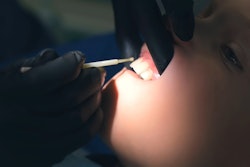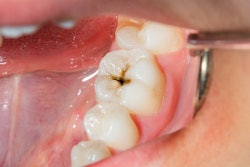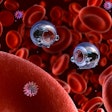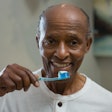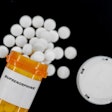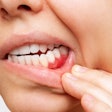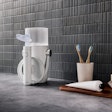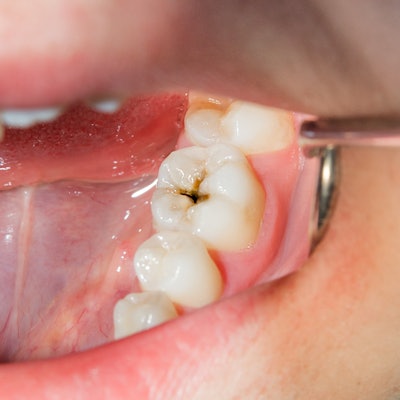
Dental sealants that contain selenium may stop caries-causing bacteria from forming on and below a sealed tooth, possibly paving a new way to help prevent tooth decay, according to a study recently published in Dental Materials.
In the in vitro study, an organo-selenium dental sealant prevented biofilm formation under the sealant, while a control sealant did not stop bacterial growth. Also, the bacterial-killing ability of the sealant with selenium was long lasting, the authors wrote.
"This modified selenium dental sealant effectively eliminates species of bacteria both on and under the dental sealant," wrote the authors, led by Phat Tran, PhD, a faculty member in the department of ophthalmology and visual sciences at Texas Tech University Health Sciences Center in Lubbock (Dent Mater, April 12, 2022).
Promising in vitro results
Selenium is a trace mineral found in multiple proteins in bacterial cells and human cells called selenoproteins. Organoselenium compounds contain carbon-to-selenium chemical compounds that have shown effectiveness in destroying some species of bacteria. Covalently attaching low concentrations of organoselenium to biomaterials and medical devices, including contact lenses and intravenous catheters, has been effective in obstructing the growth of bacterial biofilms, according to the study.
Recently, the same group conducted an in vitro study that showed that organoselenium dental sealant, Select Defense (later rebranded as DenteShield, Elevate Oral Care), could completely inhibit the formation of key cariogenic bacterial strains Streptococcus mutans and Streptococcus salivarius. However, researchers have since further improved the sealant's curing time to allow for greater protection against those bacteria, as well as others, like Streptococcus sanguinis.
The authors hypothesized that the tweaked selenium dental material would allow it to generate superoxide radicals that reduce oral bacteria growth on top and beneath sealants, offering a new approach to fight dental plaque formation, they wrote.
To study the potentially improved effectiveness, the authors created commercial dental sealant discs composed of glycidyl methacrylate, triethylene glycol dimethacrylate, and a multifunctional monomer. A compound containing selenium was added to some of the sealant discs. Both the selenium discs and untreated discs were exposed to common oral bacteria.
Dental sealants that contained selenium in concentrations of 0.25% or higher killed S. salivarius, S. sanguinis, and S. mutans bacteria, both individually and in combination. Lower concentrations of selenium completely killed S. salivarius, they wrote.
After 24 hours of exposure, the authors observed no bacterial growth under the selenium sealants using a confocal microscopy. However, patches of bacterial growth could be visualized under the sealants that were not treated with selenium, the authors wrote.
To determine the selenium sealant's long-lasting ability to kill bacteria, untreated and selenium sealant discs were immersed in phosphate-buffered saline for three months at 25° C (77° F), 37° C (98.6° F), and 57° C (134.6° F). Incubating a disc at 57° C for three months is equivalent to incubating that disc at 37° C for a year, the authors wrote.
After three months, the selenium sealants that contained 0.5% selenium killed all three bacteria for all incubation temperatures. This finding showed that the sealant's antimicrobial features did not diminish over that period, they wrote.
Notably, the study was in vitro, so the findings may not translate to clinical sealant use. However, it still highlighted the potential advantages of selenium sealants as a cost-effective antimicrobial agent.
"The organo-selenium SeLECT-Defense sealant may be an effective and durable method for protecting teeth against bacterial biofilms," Kopel and colleagues concluded.




